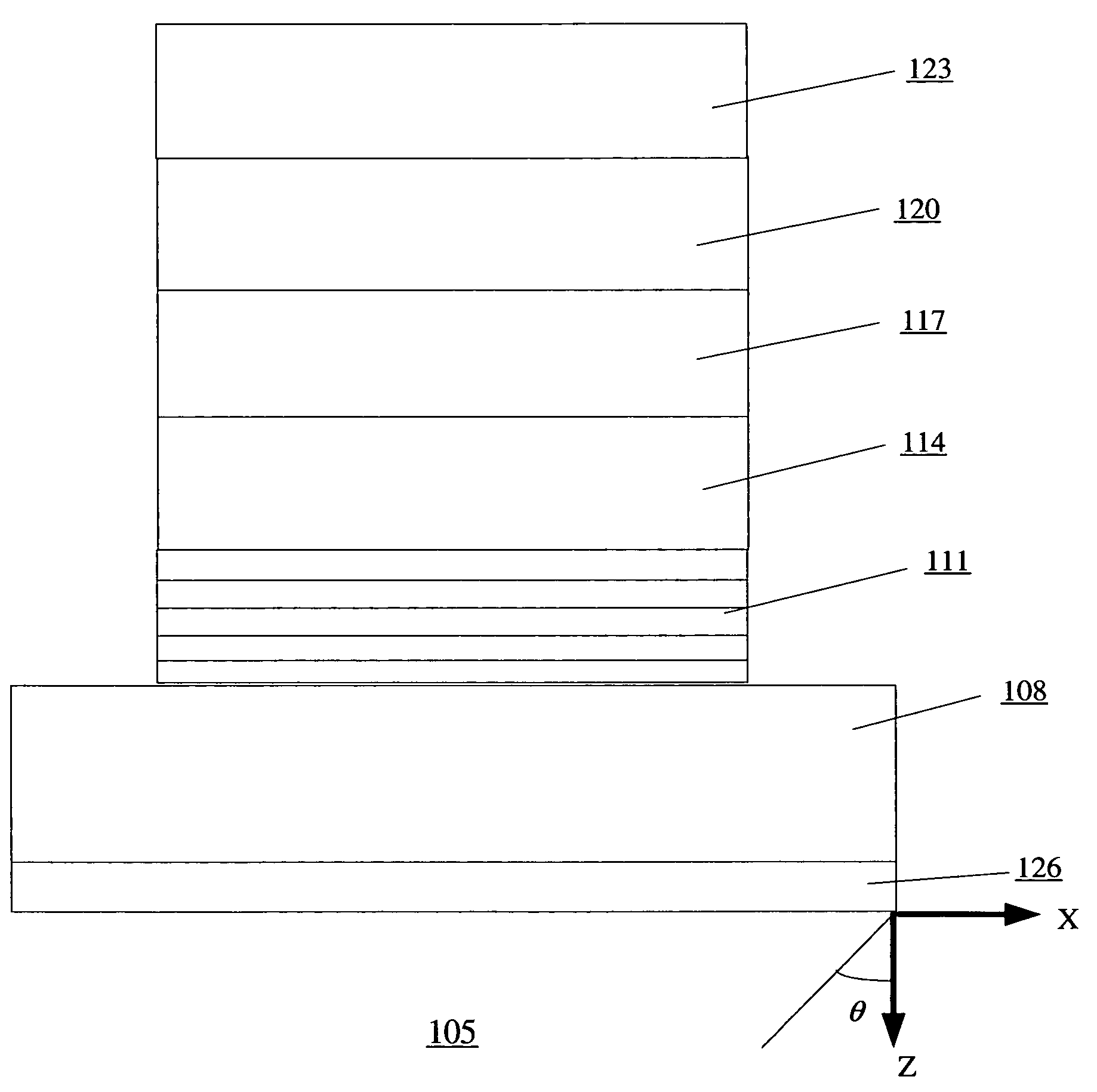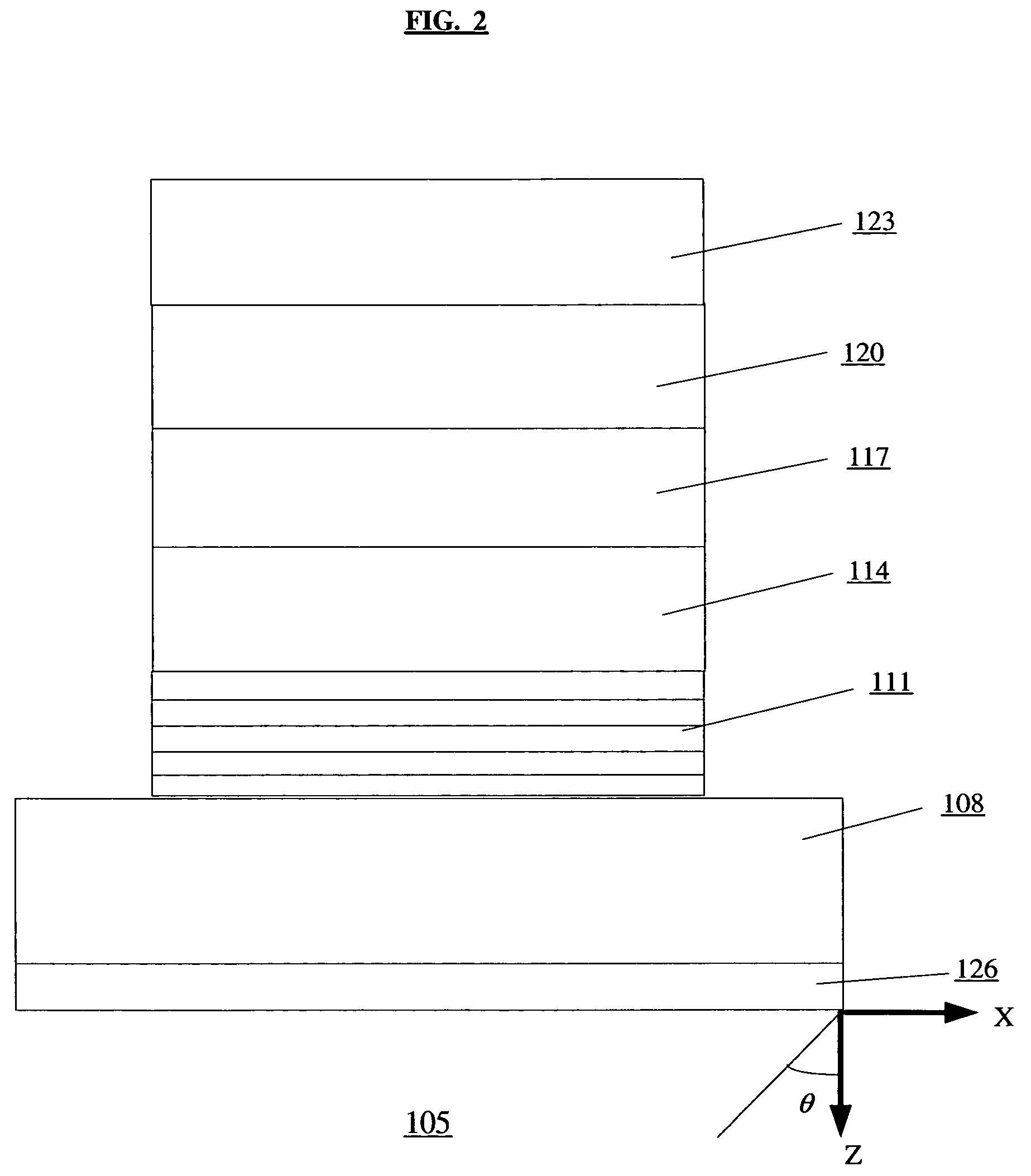Reducing or eliminating color change for microcavity OLED devices
a technology of organic light-emitting diodes and micro-cavity devices, which is applied in the direction of discharge tube luminescnet screens, natural mineral layered products, etc., can solve the problems of inability to reduce the emission spectrum of micro-cavity devices, limit the use of resonant oled structures in a number, and inability to change color
- Summary
- Abstract
- Description
- Claims
- Application Information
AI Technical Summary
Benefits of technology
Problems solved by technology
Method used
Image
Examples
first embodiment
[0051]FIG. 7 graphically shows a prospective example of the resulting emission spectrums when the microstructure is used to reduce or eliminate the color change at different viewing angles. The microstructure refracts wavelengths at angles less than 30° but internally reflects wavelengths at angles greater than 30° and thus the emission spectrums at the viewing angles greater than 30° are eliminated (e.g., the emission spectrum at the 40° viewing angle and the emission spectrum at the 60° viewing angle have been eliminated). Because of the greater blue-shifting occurring at the larger viewing angles (e.g., the 40° and the 60° viewing angles) and thus the greater likelihood that the perceived color will change at these larger angles, the elimination of the emission spectrums at these larger viewing angles greatly reduces the likelihood that there will be a perceived color change at different viewing angles. Because the internally reflected wavelengths are randomly outputted at the al...
second embodiment
[0053]FIG. 8 graphically shows a prospective example of the resulting emission spectrums when the microstructure is used to reduce or eliminate the color change at different viewing angles. The microstructure redistributes the wavelengths so that the outputted emission spectrums are broader and there is no perceived color change at the different viewing angles. The intensity of the wavelengths of the emission spectrums are increased due to the presence of the microstructure. In FIG. 8, the emission spectrum at the 0° viewing angle has a peak emitted wavelength at about 540 nm which is a dark green color. Similarly, the emission spectrum at the 40° viewing angle has a peak emitted wavelength at about 533 nm which is also the dark green color. The intensity is insignificant at the wavelengths of both emission spectrums where there is a different hue (e.g., at a wavelength of about 505 nm, the color is a blue-green color) and so both emission spectrums have the same perceived color whi...
PUM
| Property | Measurement | Unit |
|---|---|---|
| peak emitted wavelength | aaaaa | aaaaa |
| peak emitted wavelength | aaaaa | aaaaa |
| peak emitted wavelength | aaaaa | aaaaa |
Abstract
Description
Claims
Application Information
 Login to View More
Login to View More - R&D
- Intellectual Property
- Life Sciences
- Materials
- Tech Scout
- Unparalleled Data Quality
- Higher Quality Content
- 60% Fewer Hallucinations
Browse by: Latest US Patents, China's latest patents, Technical Efficacy Thesaurus, Application Domain, Technology Topic, Popular Technical Reports.
© 2025 PatSnap. All rights reserved.Legal|Privacy policy|Modern Slavery Act Transparency Statement|Sitemap|About US| Contact US: help@patsnap.com



